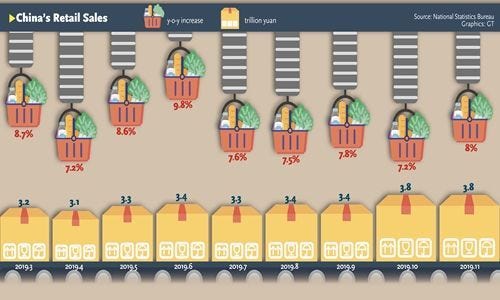Trade War
Newsletter 5 - January 6, 2020
Welcome to the first Trade War newsletter of 2020. I hope you have enjoyed your holidays and are ready for some more news on U.S.-China trade relations.
As expected, there wasn’t a huge amount going on over the holidays. That doesn’t mean there wasn’t anything of note however. Probably most important was the announcement of a date for the official signing of the ‘phase one’ trade deal between the U.S. and China.
As the last hours of the decade waned on December 31, 2019, Trump got one more tweet out, announcing that he will be meeting on January 15 with “high level representatives of China” (unnamed but likely to include Xi’s top trade negotiator Liu He), to ink the agreement, Reuters reported. Trump also wrote that he will be later going to Beijing to continue negotiations on “Phase Two!”
“EVERY. SINGLE. LINE.”
The agreement to be signed is said to be 86-pages long and at least one trade analyst says he is looking forward to reading “EVERY. SINGLE. LINE.” (Better him than me..)
“The marriage of business and government known as China Inc.”
Still, ‘phase one’ is unlikely to deal with a number of key issues of concern including importantly, the industrial subsidies China’s government showers on its companies, and that give them a big leg up when competing with their counterparts from America, Europe, Japan, and elsewhere. Here’s how trade reporter David Lynch broadly described it in the Washington Post on December 31: “President Trump’s trade deal with Beijing leaves untouched the marriage of business and government known as China Inc. that American executives for nearly two decades have said tilted global markets against them.”
“The two sides discussed industrial subsidies in the early rounds of negotiations over an agreement that exceeded 150 pages. But Chinese officials resisted making structural changes, and by the time officials settled this month on an 86-page partial accord, any commitments to reduce subsidies had been excised.”
Frozen and the Technology War
And simply signing an agreement hardly means frictions will magically disappear. Instead, they are certain to continue. The deal is “not about ending the US-China trade war, but rather freezing it in place,” Gavekal Dragonomics Andrew Batson tells us in a recent report. “Therefore, the need for global companies to reorganize supply chains to reduce their exposure to US-China trade frictions has not been eliminated.”
“The technology war is still on. Technology has become the most important locus of US-China strategic competition…The trade deal stops the escalation of tariffs, but does nothing to restrict US use of other legal and political tools to try to constrain China’s technological advances. Indeed, it is possible these measures could be used even more.” he writes.
What’s the damage so far?
A new Fed study backs up what some have been feeling: the Trump Tariffs seem to have caused blowback on the U.S. economy. “We find that the 2018 tariffs are associated with relative reductions in manufacturing employment and relative increases in producer prices,” write Fed economists Aaron Flaaen and Justin Pierce on December 28, 2019.
Supporting that conclusion, a measure of manufacturing activity in the U.S. fell to its lowest level in a decade, as this Bloomberg chart shows:
The worry is that the manufacturing downturn could spill into services, deepening the negative impact on the overall economy. That prospect is still not that likely however, according to Robin Brooks, chief economist at the Institute of International Finance, who tweets that “the hurdle for this is high” and that it didn’t happen even with Germany ‘s more severe manufacturing recession.
Back to beans
Another offshoot of the trade war: Brazil is expected to pass the U.S. to become the world’s leading soybean producer in the world during the 2019/20 season, the USDA Foreign Agricultural Service predicts. Still, Brazilian producers aren’t taking things for granted and “are keenly following the emerging trade truce between the United States and China” and “are cognizant that a trade accord between Washington and Beijing is almost certain to lessen Brazilian exports and exert downward pressure on Brazil’s soybean prices.”
Profits and politics
Meanwhile, a special thank you to the Global Times for openly stating an usually unsaid reality behind doing business in China: “foreign companies need to realize that their long-term ability to generate profits in the market hinges on their home countries’ political relations with China.”
Notable/In Depth
The folks over at China research shop MacroPolo are launching their first podcast, one that will dig deep into the connections between the American heartland, or Iowa in particular, and China mainland (think soybeans, corn, and Xi Jinping). I’m betting it’s definitely going to be worth listening to. Below is a link to where you will be able to listen to it.
An interesting blog from Council on Foreign Relations’ economist Brad Setser looks at how China is ending 2019, with a trade surplus in manufactured goods, despite the trade war and U.S. tariffs—and despite the predictions of a deficit, made by most of the financial press.
“One of the key stylized facts about the global economy in 2019 is that everyone should know China’s trade surplus in manufactures has increased by just under a percentage point of China’s GDP on the back of falling imports (the overall surplus is also up, but by a bit less). Even with the fall in trade with the United States.”
That has to do with falling imports, Setser explains, which while no doubt is in part due to a weak Chinese economy, could also be part of an intentional industrial policy, or “Made in China 2025.”
“Made in China 2025 aspires to reduce China’s dependence on imports in key sectors—and, well, in sectors ranging from medical equipment to electrical transmission to (now) memory chips, China is making progress. “
Trump Trade War Timeline
And finally, here is an up-to-date timeline on Trump’s Trade War from PIIE.






